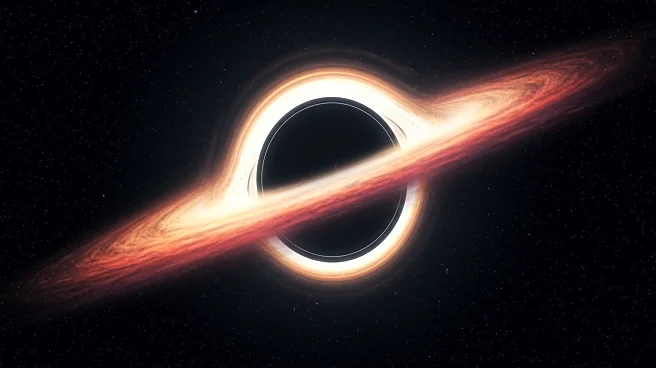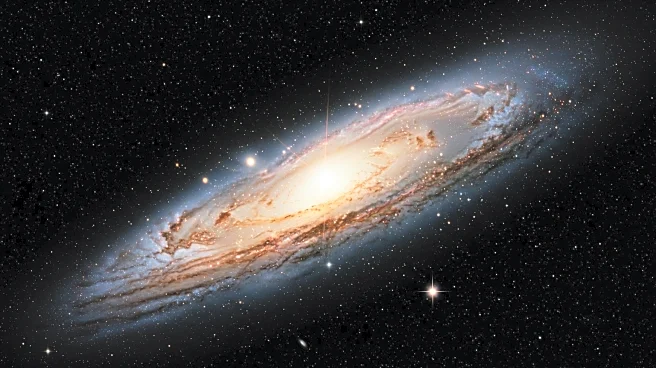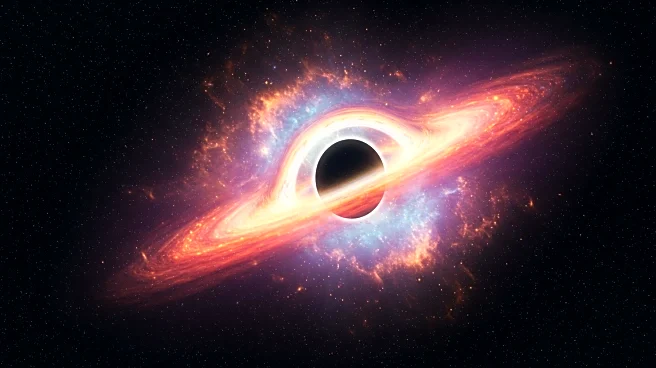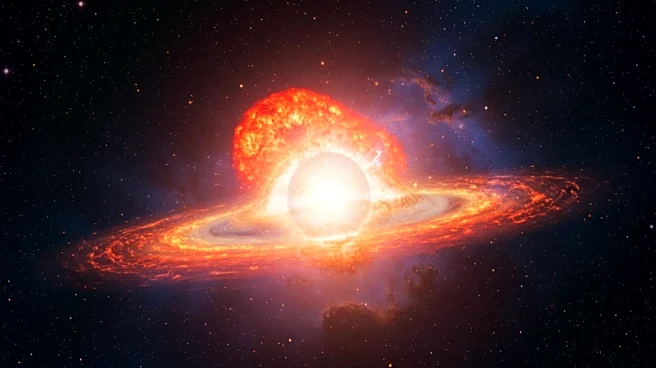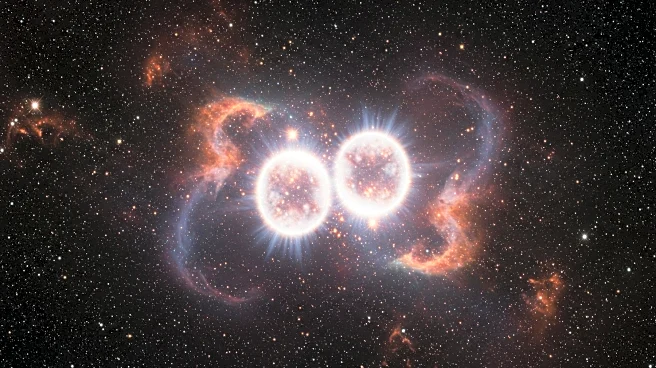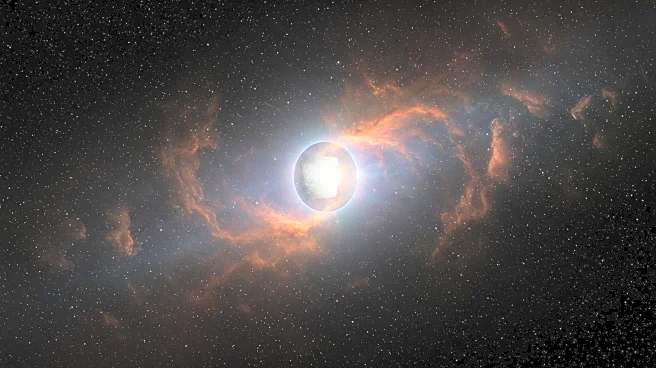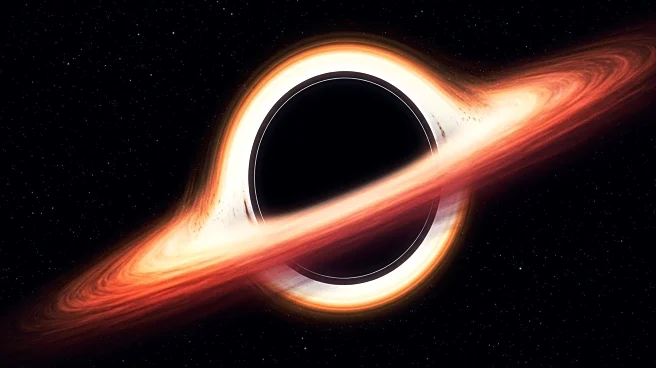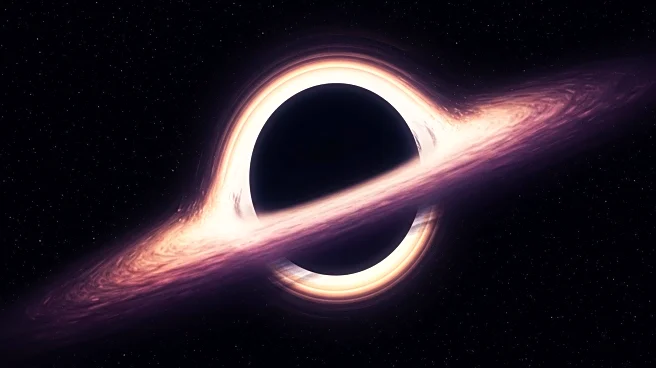What is the story about?
What's Happening?
A novel supernova, designated SN 2023zkd, has been identified by astronomers using an AI system similar to Spotify's algorithm. This discovery was made possible by the Zwicky Transient Facility at the Palomar Observatory in California. The AI, known as Lightcurve Anomaly Identification and Similarity Search (LAISS), detected unusual stellar activity, suggesting a massive star exploded while attempting to consume a nearby black hole. The AI's early detection allowed for comprehensive observations across various wavelengths, providing insights into the supernova's development. The event is believed to have occurred due to the gravitational interaction between the star and the black hole, leading to the star's explosion.
Why It's Important?
This discovery highlights the potential of AI in advancing astronomical research by identifying rare cosmic events that might otherwise go unnoticed. The ability to detect such phenomena early allows scientists to study the processes leading to supernovae in greater detail, enhancing our understanding of stellar evolution and the dynamics of binary systems involving black holes. The findings could have significant implications for theoretical models of star-black hole interactions, potentially reshaping our understanding of these complex systems. The use of AI in this context demonstrates its growing role in scientific discovery, offering a new tool for exploring the universe.
What's Next?
Following this discovery, astronomers are likely to continue using AI to monitor the skies for similar events, potentially leading to more frequent and detailed observations of supernovae. Further research will focus on understanding the specific conditions that lead to such explosions and refining models of star-black hole interactions. The data collected from SN 2023zkd will be analyzed to explore the chemical composition and dynamics of the involved celestial bodies, providing deeper insights into the lifecycle of massive stars. This could pave the way for future studies on the role of binary systems in cosmic evolution.
AI Generated Content
Do you find this article useful?
